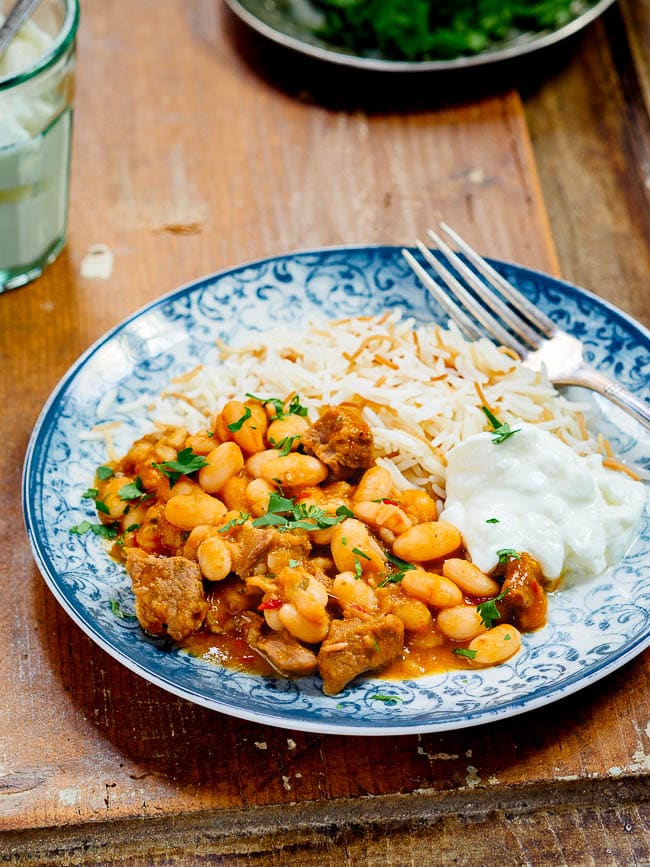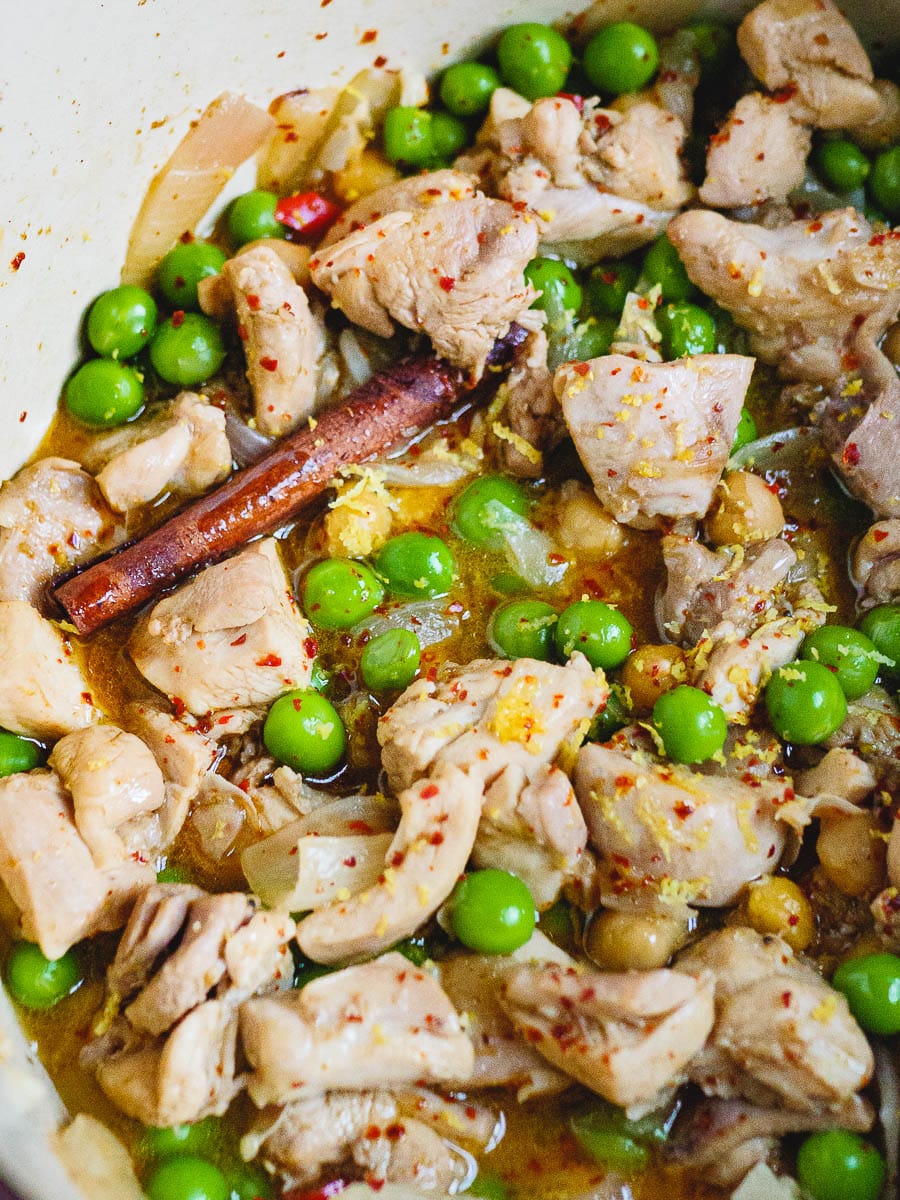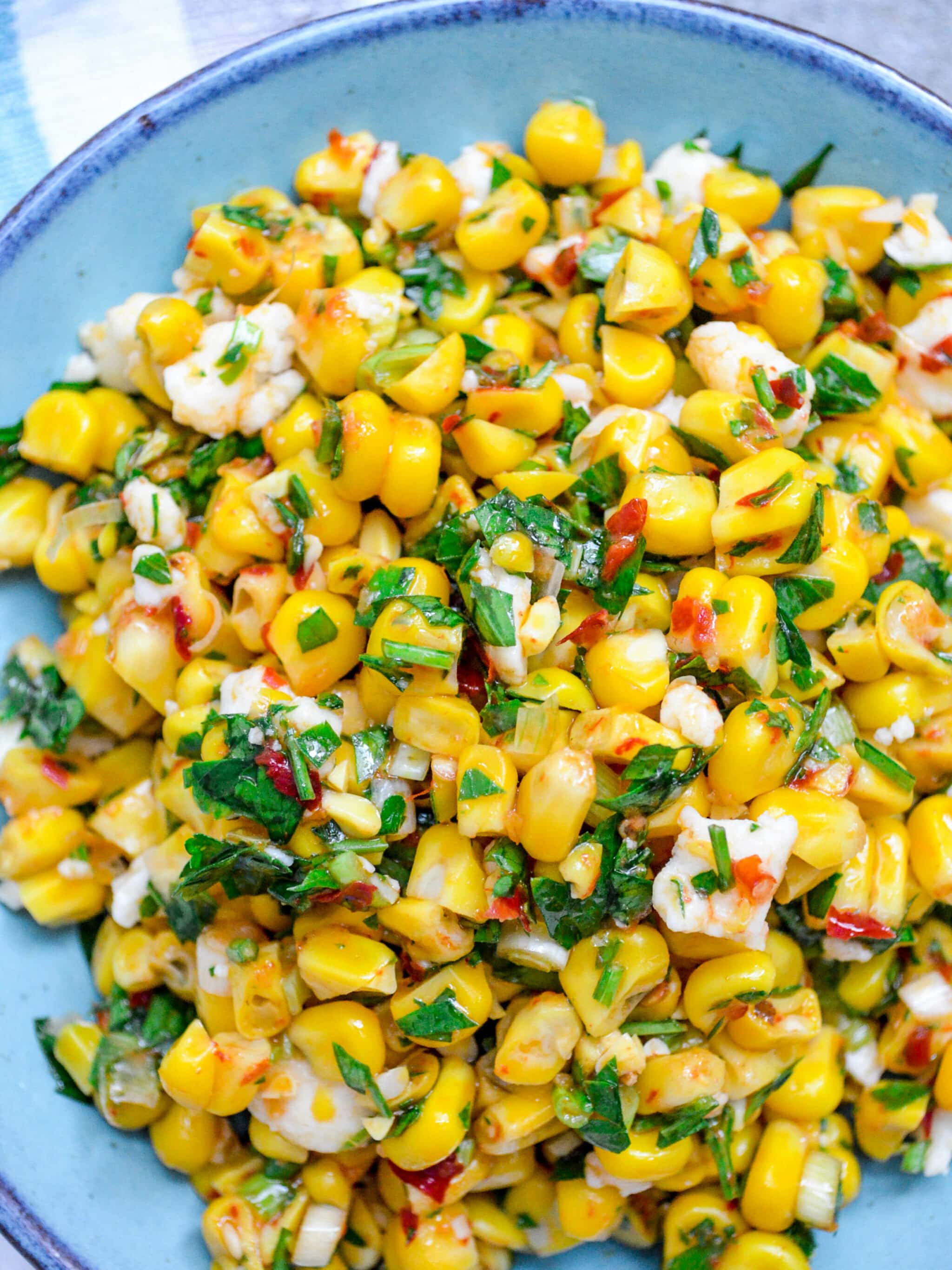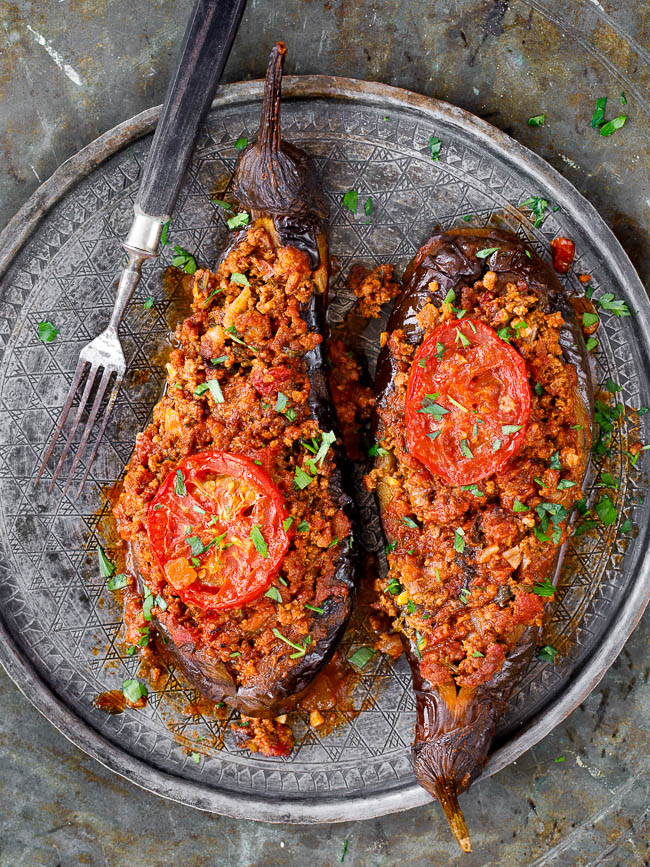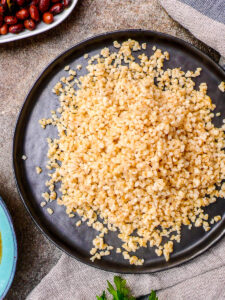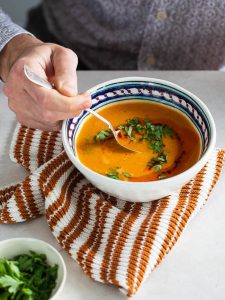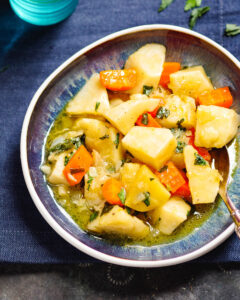When it comes to bean stews, the Turkish version is hard to beat. Indeed, it is so loved that the Turks have simply named it the same as the bean itself. Because why ever use it for anything else? Why indeed. Read on for a delicious recipe for one of my favourite everyday Turkish classics – etli kuru fasulye, or white bean stew with meat. Comfort food at its very best!
On the main road alongside the Western side of the Golden Horn, there’s a sign sticking out of the wall between the ground and first floors of a house that looks ready to collapse at any moment. Mangalda kuru fasulye, it reads. Turkish bean stew cooked over coals.
The neighbouring house don’t look any better, and there are hardly any passers-by. There’s a university nearby, but they don’t hang out on this side of the neighbourhood. When this place continues to serve portion upon portion of bean stew cooked over coals, it’s the reputation, not footfall, that carries it.
Kuru fasulye, obviously
There are countless places like this in Turkey. The humble bean stew is in fact one of the most favoured dishes to have for lunch. All year round, but particularly in winter.
It’s not difficult to understand why. It’s filling. It’s warming. It’s nutritious. And most important of all: It’s absolutely delicious.
Indeed, the Turkish bean stew is so popular that its Turkish name is simply the name for dried white beans. They are primarily used for two dishes. This bean stew, and piyaz, the bean salad often served alongside grilled meatballs.
Not long after I moved to Turkey, my partner’s parents came to visit after a holiday. As a little gift they brought (among other things) a large bag of dried, white beans.
—Thanks!, I said. —What should I make with these?
I’ll never forget the look that was returned. What sort of question was this?
—Kuru fasulye, of course.
Of course.
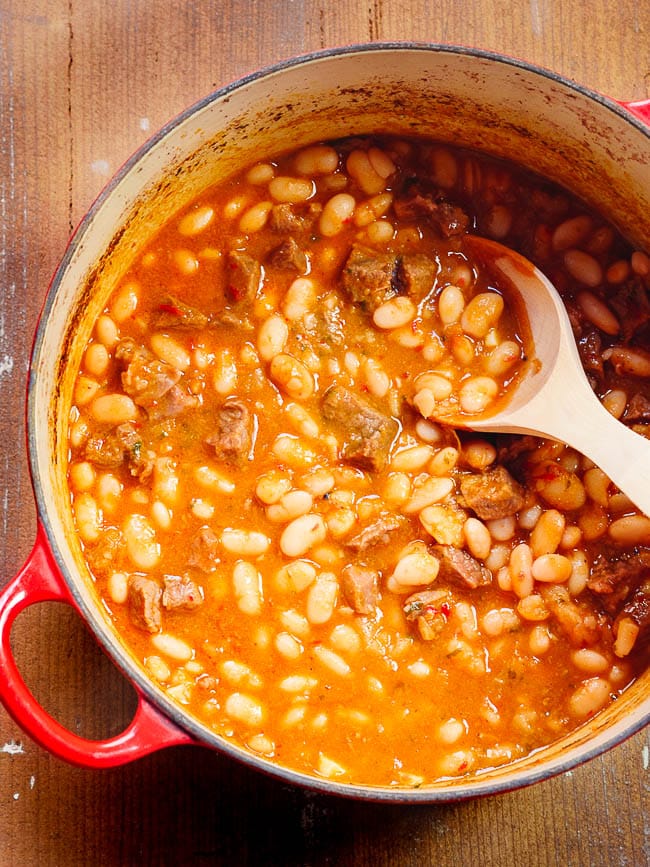
And I have to say, I agree. Even years later, I can hardly think of any better ways of eating the creamy and humble white bean. It’s comforting, warming, tasty and satisfying in so many ways.
Yet, because the beans and not the meat is the main ingredient, it doesn’t make you as stuffed and sleepy as many meat stews do. Wins all around.
The many ways to flavour a Turkish white bean stew
White bean stews are, of course, not unique to Turkey.
They’re favoured in Lebanon and other Middle Eastern countries, where they’re known as fasolia, or fassulia. Here, spices are often – but by no means always – added. Renowned food writer Anissa Helou suggests a combination of allspice, cinnamon and nutmeg. Others prefer other spices.
The greeks, of course, have their fasolia gigantes, made with butter beans and baked in the oven.
But whichever of these countries you may find yourself in, you don’t need to cross borders to find different versions. Even within Turkey, there’s an apparently endless number of versions.
Some are thick as porridge, others watery. Some are full of tomatoes, others have only a light touch of tomato paste. Some are more buttery than croissants, others rely on other ingredients than fat for flavour.
Then there’s the extra ingredient. Small cubes of lamb or beef are popular, making it etli kuru fasulye. As is pastırma, a thinly sliced cured beef spiced with the fenugreek and cumin heavy spice paste çemen. And sucuk, the popular cured sausage often seen with fried eggs at the breakfast table.
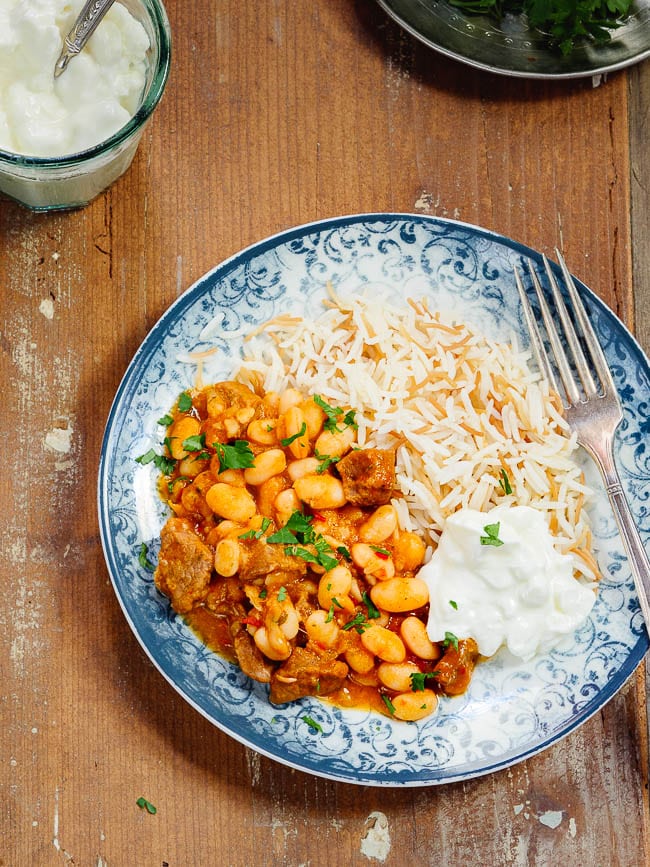
Perhaps unusually for many Westerners, your favoured meat is not there to steal the show from the beans. In all its shapes and forms, kuru fasulye always remains a bean stew. The bits of meat are simply there for flavour. Westerners who don’t know better, or aren’t used to meat as flavouring rather than main ingredient, may initially feel cheated. (Once you’ve taken a bit, of course, you’ll never want it any other way.)
Or you can, of course, keep it vegetarian. Though I suspect most of the “vegetarian” versions sold around Turkey rely on chicken or beef stock for extra flavour.
How to make etli kuru fasulye
There are probably a million different ways to make Turkish white bean stew with meat. The main secret to a very good Turkish white bean stew, however, is time.
If you want a proper kuru fasulye, only starting with dried white beans will do. This allows you to cook the beans in stock, giving them a lot more flavour than their canned counterparts.
While the beans are soaking, I cook the meat with some onions and black pepper until completely tender. This allows the meat to release a lot of its flavour into a delicious stock.
Some Western recipes suggest canned tomatoes when making kuru fasulye. I’ve never seen anyone in Turkey do that. In fact, canned tomatoes are rarely used in Turkey. And where available, often of low quality.
Instead, a good kuru fasulye relies on a good quality tomato paste – and not too much of it. We don’t want the tomato flavour to completely overpower the beans or the stock. (This is a mistake I often made in my early attempts of making it at home.)
More than that, tomato paste adds an underlying umami flavour you’ll never achieve with canned or fresh tomatoes unless you cook it for hours. Obviously, the colour will not be as attractively red as your Italian or French tomato based stews. But whatever it loses in the looks department, it more than makes up for in flavour.
I – as many Turkish home cookes – also add a touch of red pepper paste, for an extra layer of flavours. If you don’t have it, just substitute more tomato paste.
To me, butter adds a delicious and necessary richness that offsets any sharpness from the concentrated pastes. I use just a little in meat versions like this. If I’m keeping it vegetarian, I add a lot.
While I’ve given proper measurements in the recipe below (well of course!), once you’ve made this stew a few times, the above is all you need to know. You can vary the amounts of virtually everything, and it will still taste delicious.
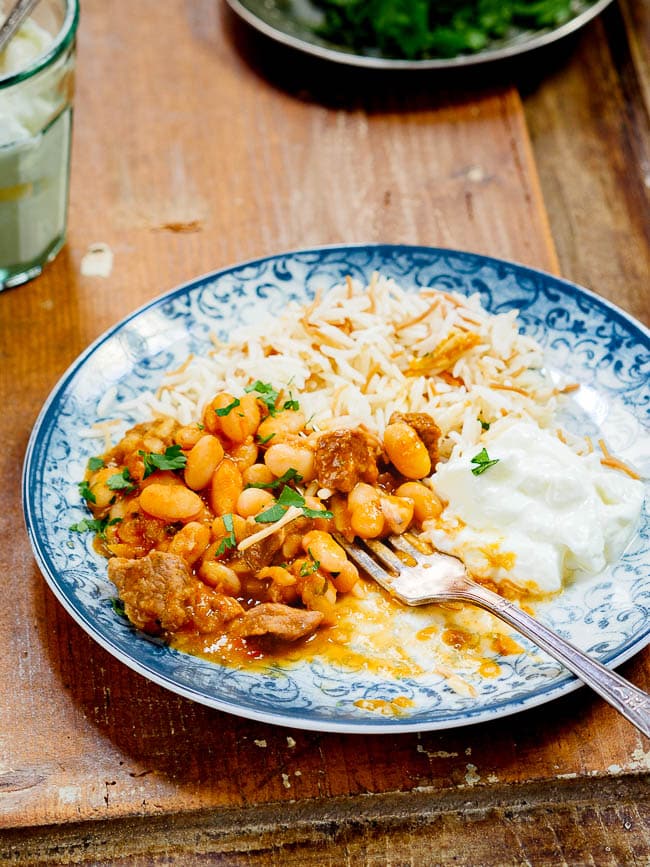
Note that this version uses a lot of meat compared to most Turkish versions. The meat still plays second fiddle, but doesn’t hide entirely in the background. Many will be more than happy with half – or even less – of the amount of meat.
How to serve Turkish white bean stew with meat
In Turkey, etli kuru fasulye is always served with rice and a good dollop of yoghurt alongside. I can’t think of any way to improve that way of eating it.
Rice is the perfect accompaniment to this flavourful yet mild stew, while the yoghurt adds a tangy note that compliments the richness of the stew very well. If you’re not accustomed to having plain yoghurt with your dinner, I urge you to try it! Or you could always revert to any more familiar cultured dairy product, like sour cream or crème fraîche.
As ever, I always recommend a simple salad alongside. I feel the simple humbleness of bean stew calls for an equivalent simple humbleness for the side salad. This is not the time for an extravagant salad centerpiece! A few leaves of bitter greens, a chopped up carrot, perhaps a little turnip. A squeeze of lemon, a drizzle of olive oil. That’s all I need.
The recipe serves 4-6, depending on what else you serve. It can easily be doubled, even while keeping the meat the same amount.
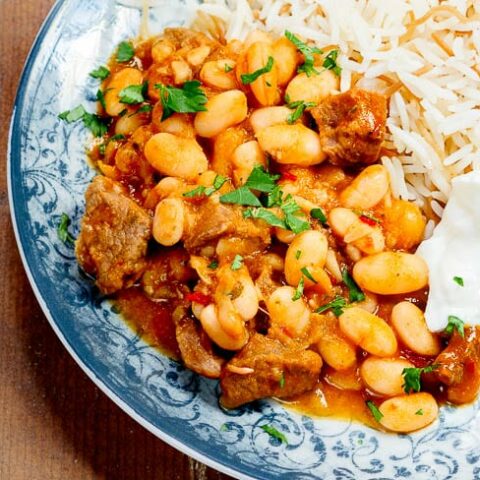
Turkish white bean stew with meat (Kuru fasulye)
Ingredients
- 300 g dried white beans
- 500 g beef stewing meat, cut into 1-2 cm cubes
- 1 onion, quartered
- 1 bay leaf
- 25 g butter
- 3 garlic cloves, finely chopped
- 40 g tomato paste
- 15 g Turkish sweet pepper paste (tatlı biber salçası), or more tomato paste
- 1 tsp sugar
- 1 Tbsp lemon juice, or to taste, eller etter smak
- flat leaf parsley, finely chopped, to garnish
- pul biber (Aleppo pepper), to garnish (optional)
- water
- salt and pepper
How I make it
- Cover the beans with at least 3x the volume fresh water and a good amount of salt (I add a couple of teaspoons). Leave to soak for 8 hours or over night.
- Add the meat, onion and bay leaf to a large pot. Add water to cover with 1–2 cm (⅖–⅘ in). Add salt – I add a little less than I would for a soup (the tomato and red pepper pastes will add more salt later) – and a generous helping of freshly ground black pepper. Bring to the boil and let it bubble strongly for a couple of minutes. Skim. Lower the heat to low/medium and leave to simmer until the meat is very nearly perfectly tender, around an hour. Take out and discard the onion bits.
- Discard the beans’ soaking water and rinse them, then add the beans to the meat. Add more water if necessary – there should be enough liquids to easily cover. Turn up the heat and bring to the boil. Let it bubble strongly for a couple of minutes, then skim again, if necessary. Turn the heat down to low and leave to simmer until the beans are soft and creamy, usually 20-30 minutes, though it can sometimes take significantly longer. It all depends on the age and type of your beans.
- Meanwhile, heat a thick bottomed frying pan over medium heat. Melt the butter in the bean, then add garlic, tomato paste, red papper paste and sugar. Fry for a couple of minutes, stirring constantly. Add a ladleful of the liquids from the pot with the beans and meat, then mix well. Repeat with a couple more ladlefuls, until the tomato sauce is fairly thin and can be easily mixed into the rest of the stew without having to stir strongly.
- Add the tomato sauce to the bean stew. Mix carefully. Add lemon juice, salt and pepper to taste. Leave to simmer over a low heat for 5-10 minutes to allow the flavours to settle. Take off the heat and leave for at least 10 minutes.
- Serve the bean stew warm, topping with a little parsley and some chili flakes, if you like.


